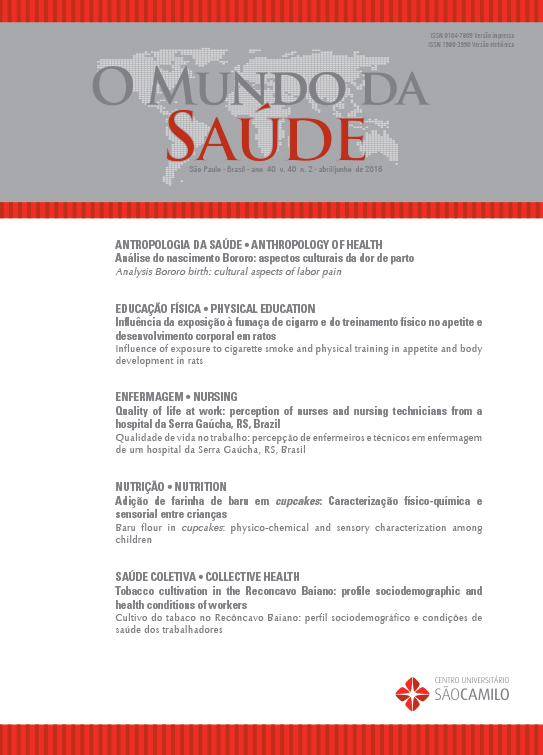Analysis Bororo birth: cultural aspects of labor pain
DOI:
https://doi.org/10.15343/0104-7809.20164002160168Keywords:
Labor pain, Culture, Indigenous population, Normal birthAbstract
Whereas the ways to feel and express pain are governed by cultural codes and this feeling is from meanings conferred
by the community, this ethnographic study aimed to understand the meanings of labor pain for indigenous women of
the Bororo ethnic. Research conducted in the first half of 2015 in Great Stream, the village located in Santo Antonio
of Leverger city/MT, through participant observation, interviews and bibliographical studies adopting as theoretical
framework the Anthropology of Health. The manifestation of labor pain or lack thereof, as in the case of the Bororo
women, is closely related to socio-cultural learning that begins in childhood. Childbirth was presented as the appropriate
time for the Bororo women reaffirm the strength that have demonstrated in silence and resignation throughout
labor and delivery, brazilian society of the XXI century in which pain has tragic character and has been increasingly
combated with analgesics and anesthetics. Bororo’s population understand this pain as a natural process that should
be conducted without interference or allopathic medication.. It concludes that it is important for health professionals to
try to understand the social and cultural aspects involved in the delivery of pain beyond the biomedical understanding,
providing opportunities for differentiated care according to the needs and characteristics of women and families served.






























